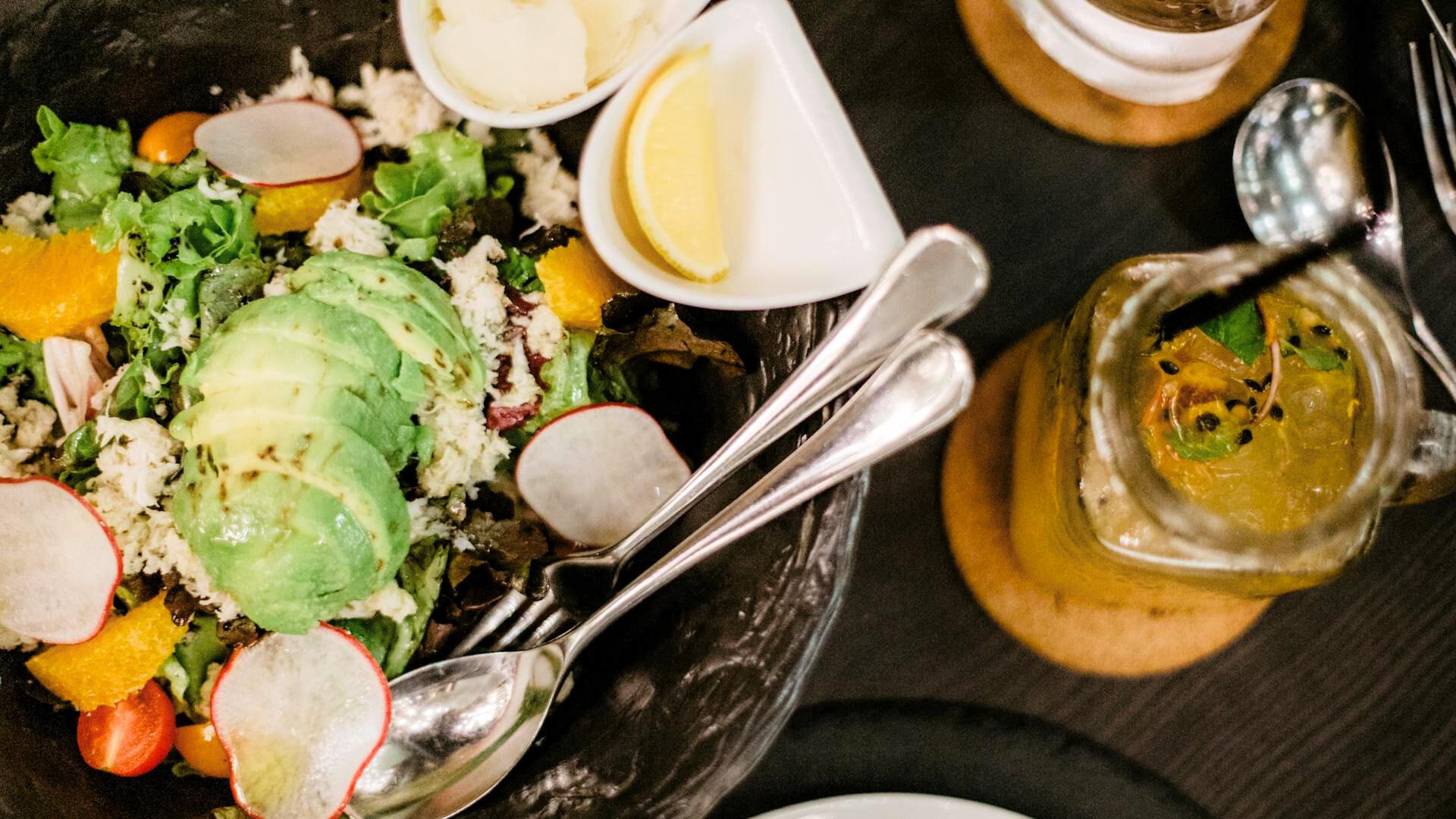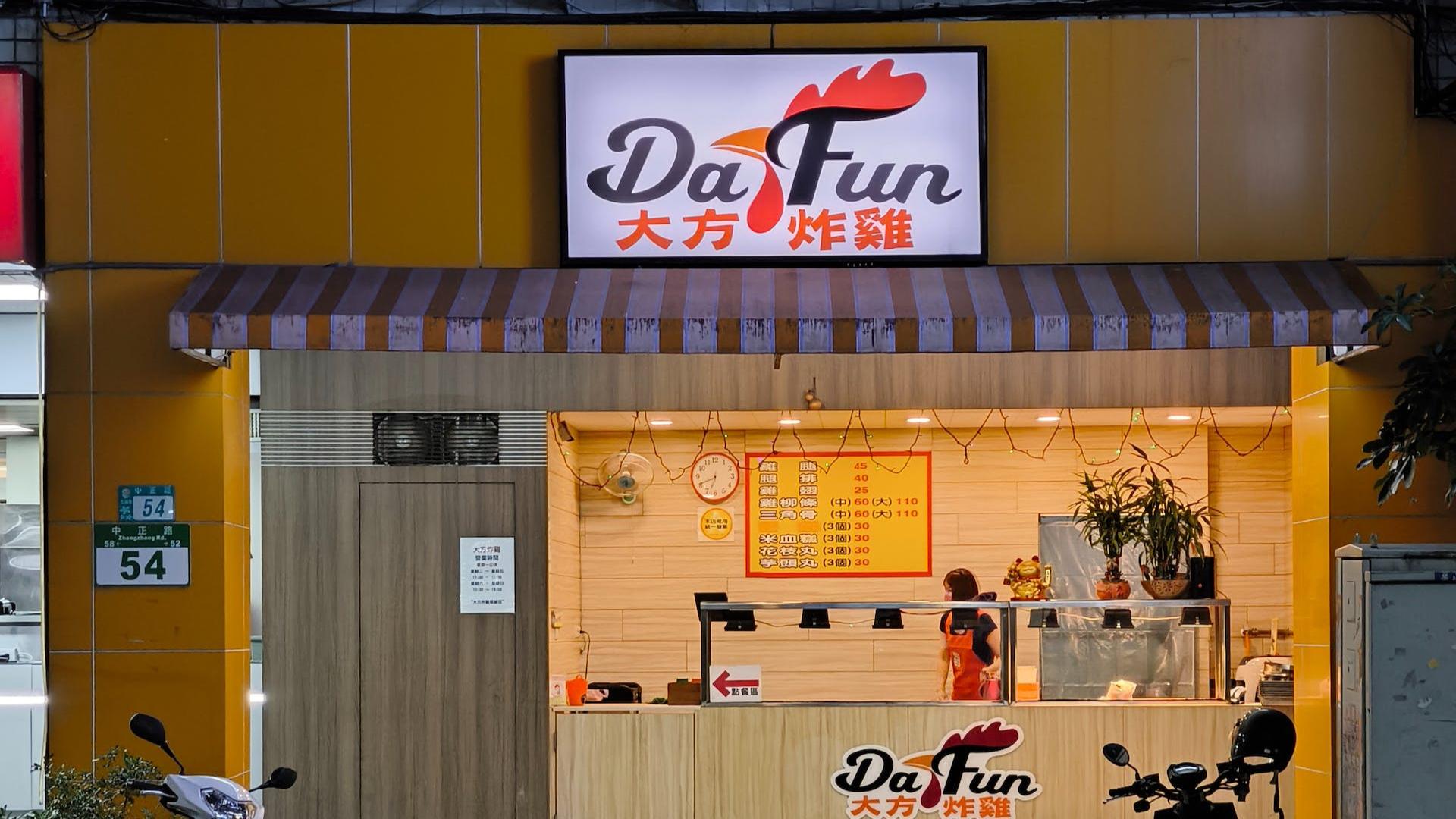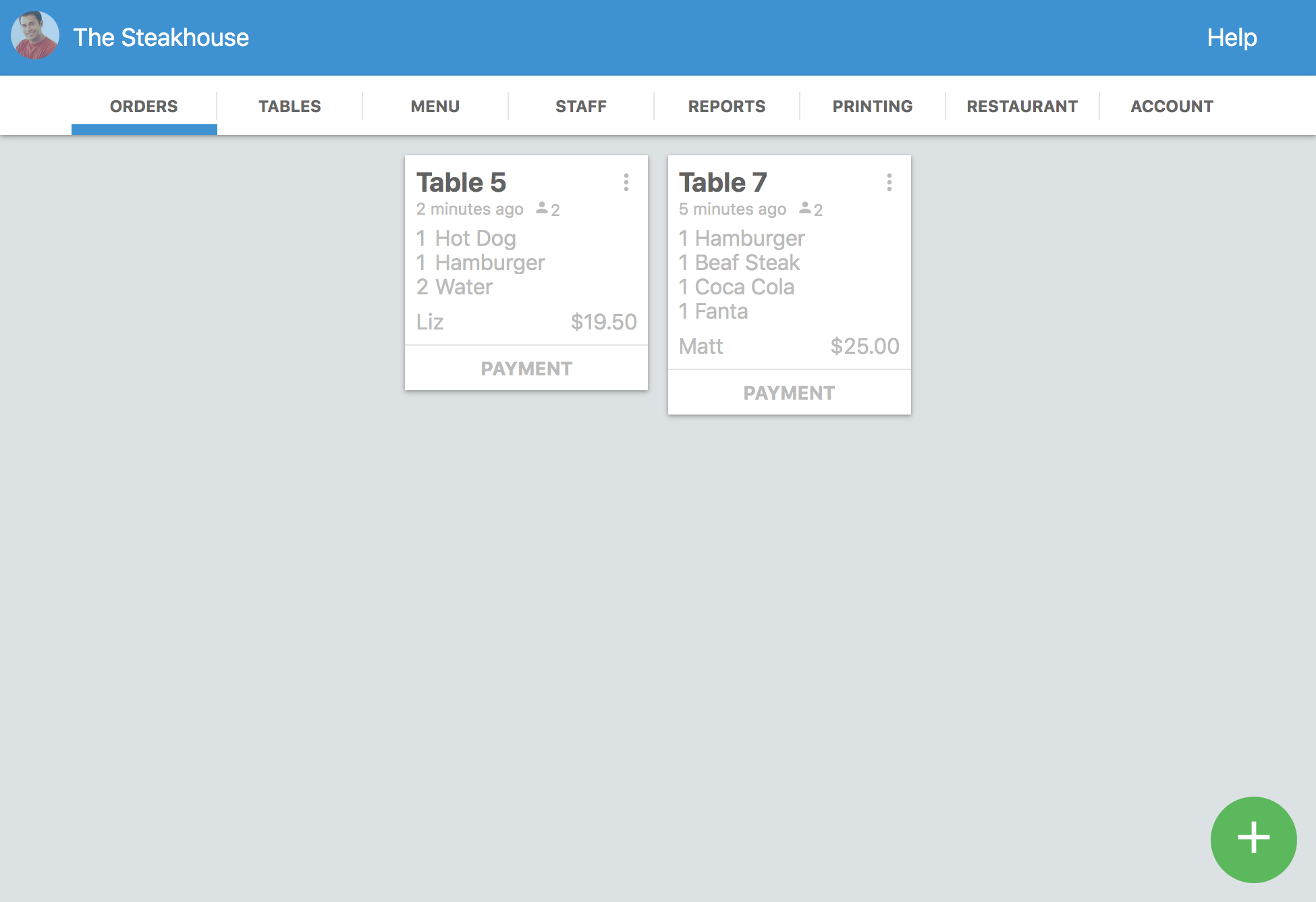We’ve talked about brand identity several times on our blog, mostly discussing other topics such as logos and traditional marketing. However, branding on its own is a strong strategy businesses can use to maximize sales, customer awareness, and the effectiveness of other marketing efforts. In this article, we’ll talk in detail about branding and how your restaurant can benefit from applying relevant techniques. We’ll also talk about the benefits of branding, the current trends in the restaurant industry, and some suggestions you can use to apply or adapt them to your particular business. Let’s begin!
What Is a Brand Identity?

Branding is an extensive topic that requires you to study several data sources—from internal information like your restaurant’s marketing and sales data to external data like customer preferences, consumer behavior, and even psychology. That’s why it seems like there’s a sizeable barrier to entry when it comes to applying branding to your business. If you’re a restaurant owner or manager and you feel intimidated by branding and all it takes to do it right, we can guarantee there’s nothing to fear. Branding is something that’s an intrinsic part of every business. Applying branding strategies allows you to take control of the branding of your restaurant. Even if you're not actively implementing a formal branding strategy, your restaurant already has a brand, and it's being communicated to customers in a variety of ways. Here are some simple examples of how branding is already part of your restaurant business:
- Your restaurant's name: The name of your business is one of the most important elements of your brand. It should be memorable, unique, and reflective of the type of food you serve and the atmosphere you want to create.
- Your restaurant's logo: Your logo is a visual representation of your brand. It should be simple, easy to recognize, and consistent with your overall brand identity.
- Your restaurant's décor: The decoration and environment design of your restaurant contribute to the overall experience that customers have. Both aspects should be consistent with your brand identity and create a welcoming and inviting atmosphere.
- Your restaurant's menu: Your menu is another opportunity to communicate your brand to customers. The design of your menu, the language you use, and the way you present your dishes all contribute to your brand identity.
- Your restaurant's staff: Your FOH staff is, almost literally, the face of your brand. They should be friendly, knowledgeable, and professional. Their interactions with customers play a major role in shaping customer perceptions of your brand.
- Your restaurant's online presence: Your website and social media pages are important channels for communicating your brand to customers. The content you share on these platforms should be consistent with your brand identity and reflect the values and personality of your restaurant.
Even if you're not explicitly thinking about branding, all of these elements contribute to the overall perception of your restaurant in the minds of your customers. By paying attention to these details, you can consciously shape your brand and create a more cohesive and memorable experience for your customers.
Why Is Brand Identity Important for Restaurants?

Branding is a way of communicating with your customers indirectly—it’s more akin to subliminal messages. Since your restaurant already has some sort of branding, even if you’re not controlling it, that could create a negative impression or perception for your customers. A poorly designed branding strategy can also change other business owners' perceptions of your restaurant, which is more important than it sounds. Here's a list of the negative impacts a lack of branding has on your business:
- Unclear brand identity: Without a clear and defined brand identity, your restaurant may struggle to convey its unique value proposition and attract loyal customers. That can lead to confusion among consumers about what your restaurant stands for and what kind of experience they can expect.
- Inconsistent messaging: Without a cohesive branding strategy, your restaurant's messaging may be inconsistent across different channels, such as your website, social media, and in-person interactions. That leads to a fragmented brand experience and makes it difficult for customers to connect with your restaurant on a deeper level.
- Missed opportunities for differentiation: In a competitive restaurant industry, a strong brand helps your restaurant stand out from the crowd and capture the attention of potential customers. That’s even more important because the industry is becoming more competitive, and even more so if your restaurant doesn’t stand out from its concept alone.
- Reduced customer loyalty: A well-defined brand fosters customer loyalty by creating an emotional connection with consumers. A branding strategy can be a powerful method of improving customer loyalty without applying specific strategies with that goal in mind.
- Limited growth potential: A lack of branding can hinder your restaurant's ability to grow and expand into new markets.
- Ineffective marketing efforts: Without a clear understanding of your brand identity and target audience, marketing efforts may be less effective and targeted, which causes you to waste resources and miss opportunities to reach the right customers.
- Difficulty attracting and retaining top talent: A strong brand can be a magnet for talented employees who share your restaurant's values and vision. That can help your restaurant succeed by attracting top-notch employees.
- Inability to adapt to changing trends: In a dynamic industry, a strong brand provides a foundation for adapting to changing consumer preferences and market trends. Without it, your restaurant may struggle to pivot and remain relevant in the face of evolving customer expectations.
- Erosion of customer trust: A lack of branding can lead to a perception of unprofessionalism or lack of direction, which can erode customer trust.
- Missed opportunities for brand collaborations: A strong brand can open doors to valuable partnerships and collaborations with other businesses. Without a clear brand identity, you may miss out on opportunities to expand your reach and enhance your restaurant's offerings.
There might be other ways in which your restaurant suffers from the lack of a well-designed brand.
Current Branding Trends in Restaurants

Several branding trends are going on in the restaurant industry at the moment. Something to keep in mind is that there’s a sort of modular approach to branding—the strategies you can apply in your business are individual, so you can apply various at the same time. Another thing you should consider is that branding is closely related to the concept of restaurants. In a way, the concept of restaurants is the rulebook or cornerstone from which your branding strategy branches. That’s why two or more restaurants can apply the same branding techniques and achieve different results if their concepts are completely different. Here’s a list of the most common branding trends in 2023:
- Experiential Dining: Create a memorable experience for your customers by going beyond just serving food. Consider incorporating live music, interactive elements, or unique themes to make your restaurant a destination rather than just a place to eat. This is much easier when your restaurant’s concept is attractive on its own. A simple example of this is Alinea, a restaurant with a highly creative, modern, and even artistic approach to food.
- Storytelling and Emotional Connection: Evoke emotions and connect with your customers on a deeper level by telling a compelling story about your restaurant, your food, and your team. Share the inspiration behind your dishes, highlight the origins of your ingredients, and showcase the passion of your staff. This has been explored extensively in high-end and fine-dining restaurants.
- Visual Storytelling and Instagrammability: Capture attention and create a buzz around your restaurant by crafting visually appealing content that is shareable on social media, especially Instagram. Use high-quality photos and videos, captivating captions, and trendy hashtags to engage your audience. This is a near-perfect strategy for comfort and fast-food restaurants.
- Community Engagement and Local Ties: Foster a sense of community and connect with your local neighborhood by hosting events, partnering with local businesses, and participating in community initiatives. Show your commitment to the area and build a loyal following among your neighbors. This strategy can be easily applied when your restaurant is located in small cities or cities close to rural areas.
- Transparency and Traceability: Address the growing demand for transparency in the food industry by showcasing the origins of your ingredients, highlighting sustainable practices, and demonstrating your commitment to ethical sourcing. Give customers a glimpse into the journey of their food, from farm to table.
- Tech-Enabled Dining Enhancements: Embrace technology to enhance the dining experience and streamline operations. Consider using QR codes for menus and ordering, mobile payment options, interactive tableside tablets, or self-service kiosks to provide a seamless and personalized experience. This is almost mandatory nowadays. Also, the opposite is true—restaurants that are using very little technology to create old-time-like dining experiences.
- Social Media Presence and Influencer Marketing: Leverage social media platforms to connect with your audience, share your brand story, and promote your offerings. Partner with relevant influencers in your community to reach a wider audience and build credibility.
- Employee Empowerment and Brand Advocacy: Empower your employees to become brand ambassadors by providing them with training, opportunities to connect with customers, and a sense of ownership in the success of the restaurant.
You can apply all of these to your restaurant as long as they're relevant to its concept. If you want more ideas, check out our blog for more marketing and management techniques that can also affect the brand of your business.
How to Adapt Your Restaurant to Branding Trends

Giving tips on how to adapt a restaurant without a branding strategy is difficult because the restaurant doesn’t have a branding foundation, which also means you likely lack the tools to understand your current branding. That’s why it’s much easier to include branding in the restaurant’s business plan as part of the marketing strategy. Here are some steps to create or take control of your restaurant branding if you didn't think of this the first time you were developing its concept:
1. Gather Information
Collect information about your restaurant, including its history, mission, values, target audience, and competitive landscape. You must also study your current marketing strategies and the message they’re trying to convey. Additionally, study everything associated with your restaurant’s image, like your logo, images you publish on social media, and your website, among other things. This information will help you develop a clear understanding of your brand's foundation. Here are some places where you can gather the information you need:
- Restaurant documentation: This includes your business plan, mission statement, marketing materials, and any other documents that outline your restaurant's goals, values, and target audience.
- Customer feedback: Surveys, online reviews, and direct feedback from customers can provide valuable insights into how your restaurant is perceived and what you can do to improve your branding.
- Employee interviews: Your employees can provide valuable insights into your restaurant's culture, values, and how they perceive your brand.
- Industry research: Analyze your competitors' branding strategies and identify trends in the industry to understand how you can position your restaurant.
- Social media analytics: Use social media analytics tools to track engagement, sentiment, and audience demographics to understand how your brand is perceived on social media.
2. Identify Your Brand’s Essence
Define the core characteristics of your restaurant, such as its personality, style, and unique selling proposition. You must consider your target audience, the goals you want to achieve with your branding, and current and future marketing strategies. This will help you articulate a consistent brand message that reaches your audience effectively.
3. Develop a Brand Voice
Establish a consistent tone and style of communication that aligns with your brand's personality and appeals to your target audience. The goal of this is to achieve noticeable consistency across different platforms and marketing elements.
4. Create Visual Brand Elements
Design a recognizable logo, color palette, and typography that represent your brand's essence. In some cases, you might want to stick to your current logo, especially if you already have a sizeable following and customer base. Alternatively, you can redesign your logo to improve it while also maintaining certain aspects of its design to both attract new customers and retain existing ones that are used to your current one.
5. Conduct a Brand Audit
Evaluate your current branding efforts to identify areas of strength and weakness. This will help you determine where to focus your efforts and make necessary improvements. This is especially important if you haven’t applied a branding strategy and don’t know the impact that has had on your restaurant’s image. It can allow you to keep the good aspects of your restaurant’s image unchanged, improve the weaknesses, or even help you decide on making a full redesign of your restaurant.
6. Define Your Brand Guidelines
Create a set of guidelines that outline the proper use of your brand's visual elements, voice, and messaging. This will ensure consistency across all touchpoints. This step is helpful when you’re delegating various marketing channels; the people in charge will be able to follow clear guidelines to give the restaurant a consistent voice. This will also help you educate your employees about your brand's identity, values, and messaging. Encourage them to embody your brand's personality in their interactions with customers.
7. Monitor and Adapt

Continuously monitor your branding efforts and adapt as needed based on customer feedback, market trends, and competitive activities. Make sure that, as you’re applying different branding techniques, you’re also equipping yourself with the necessary tools to oversee them accurately. This is crucial in an industry as competitive as the food and service industry.
Bonus Tip: Seek Professional Help
If you need assistance developing or refining your restaurant's branding, consider working with a branding consultant or marketing specialist. That way, you can create a branding strategy that aligns everything that has an impact on your customer’s perceptions of the restaurant. It’s worth the investment considering marketing, customer service, environment design, delivery packaging, copywriting, social media, and website design, among other things, have an impact on your restaurant’s image. It might be too much to handle for a single person. With the help of a professional, you can come up with an effective strategy that covers all the corners and that can also be automated, so managing it on your own is easier.
A Strong Brand Identity Is Essential for Restaurants

The previous steps can also help you build a branding strategy from the ground up. The only difference is that you have all the creative agency to come up with brand elements from the start, which puts you in a much more advantageous position. Succeeding in the restaurant, hospitality, service, and food industries requires you to have a very active role in the branding and marketing aspects of your business. Having a well-developed brand image, which is intrinsically linked to your restaurant’s reputation, is key to achieving lasting success. Approaching the whole subject with the right strategy is vital. On the other hand, not having a strategy at all endangers the image of your restaurant. In a world where optics are increasingly important, that can prove to be a fatal mistake that can cost you your business. Are you applying the right strategies?




